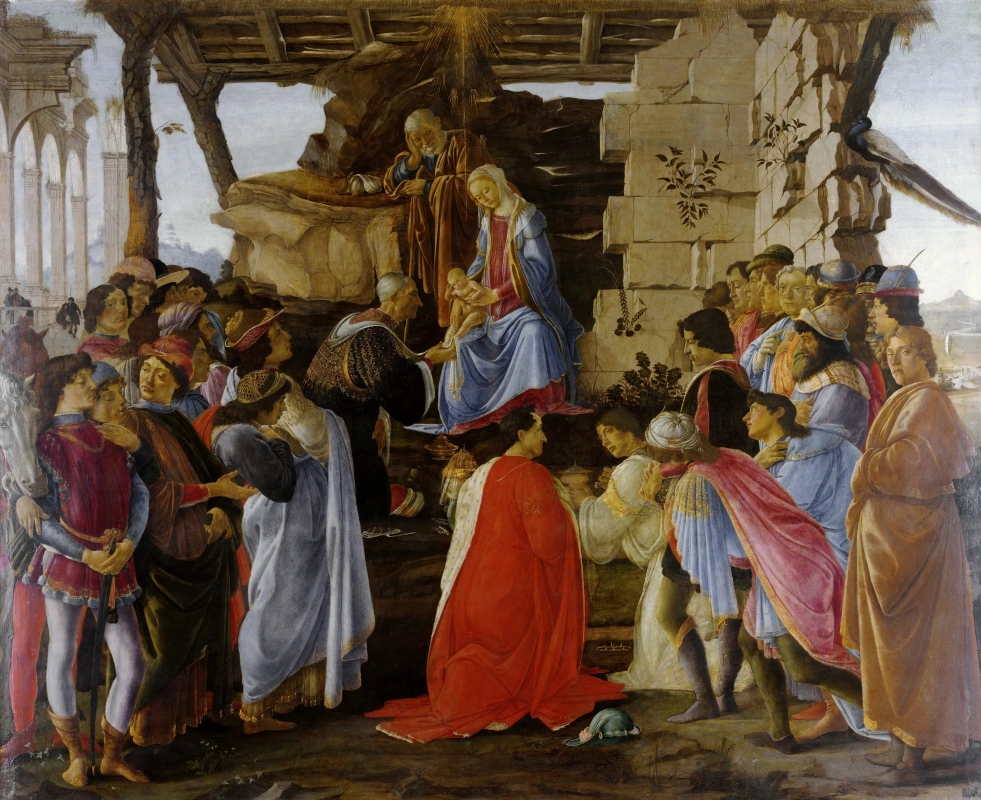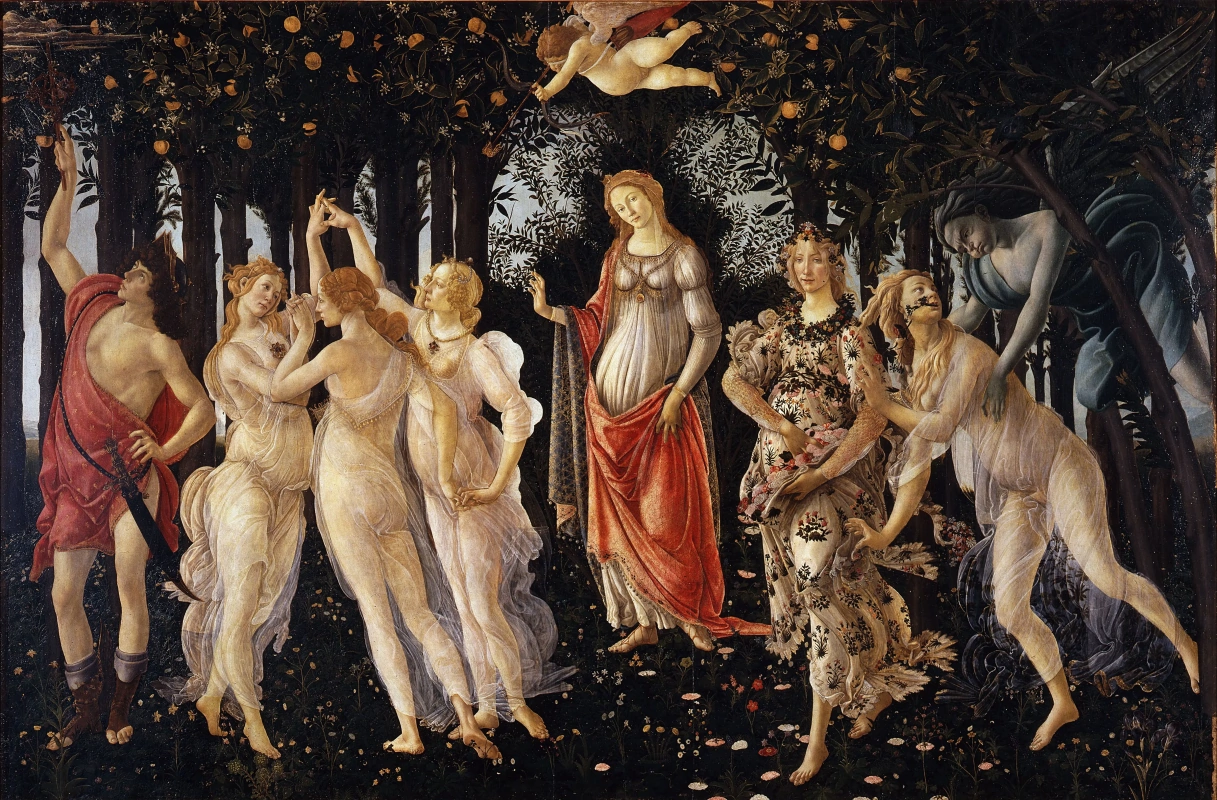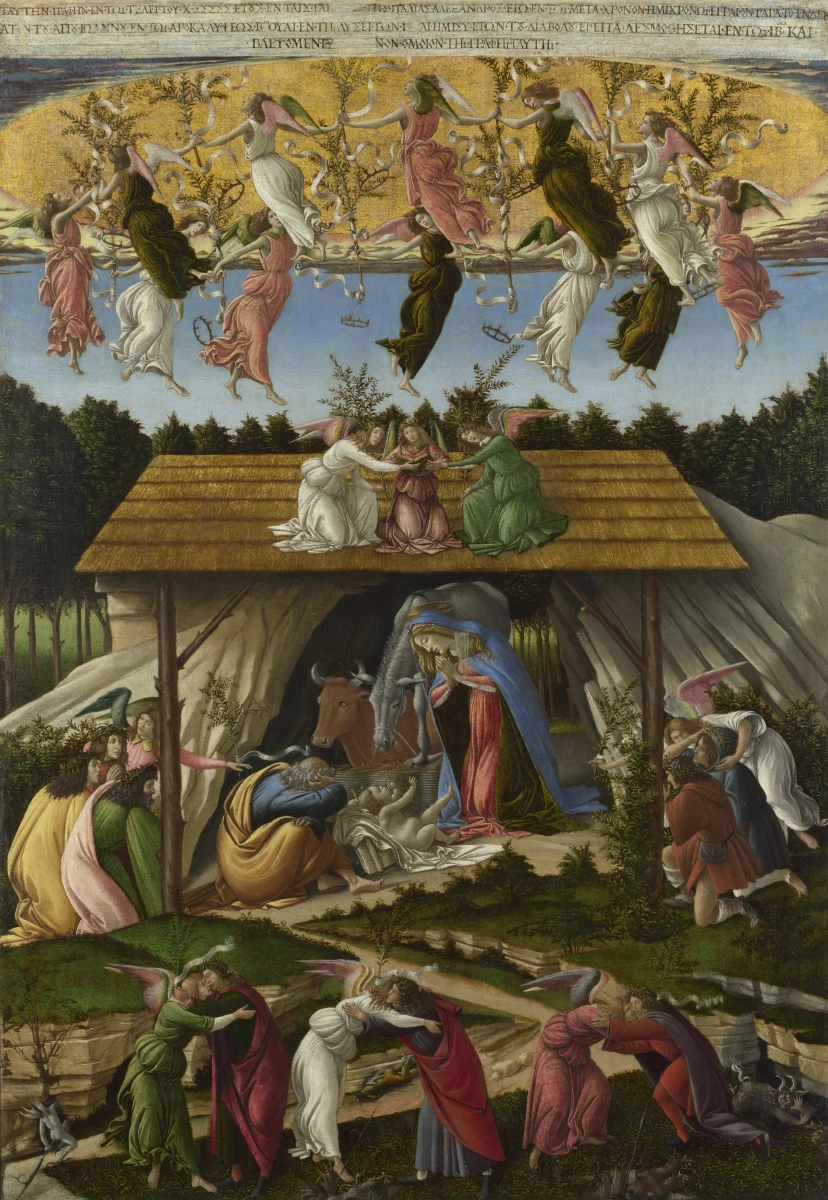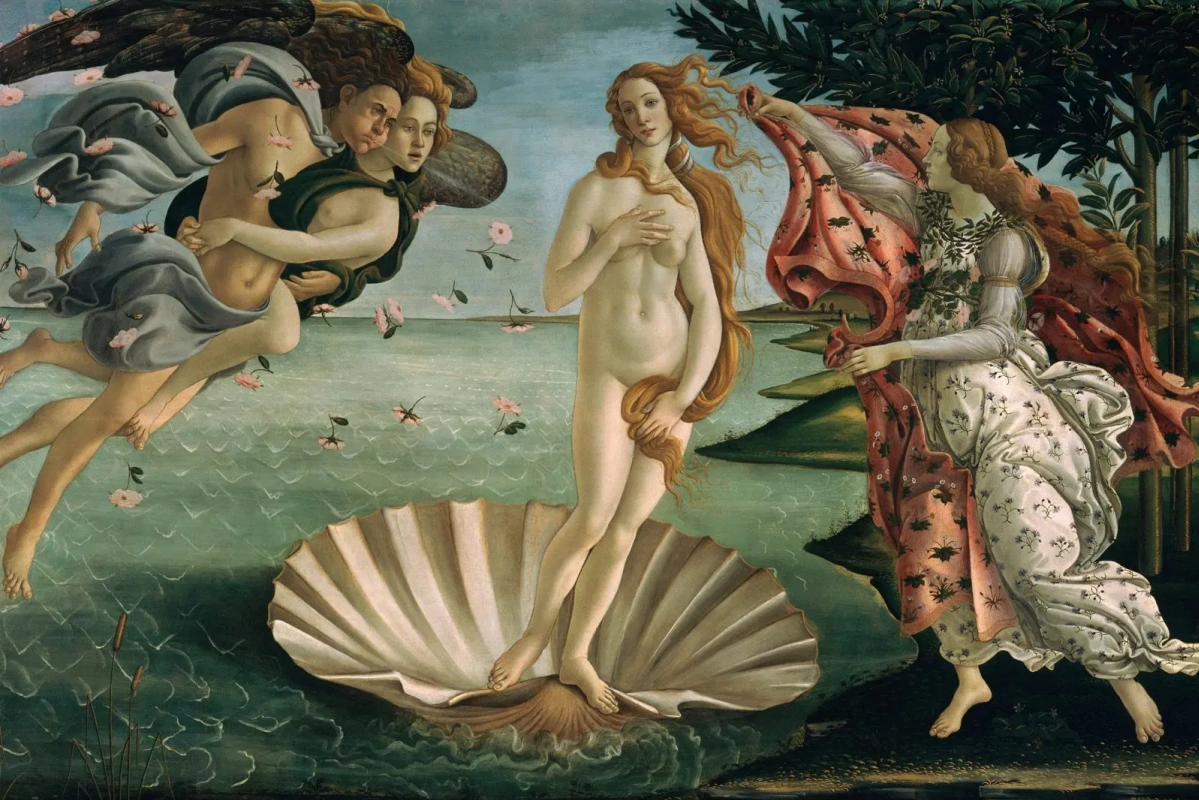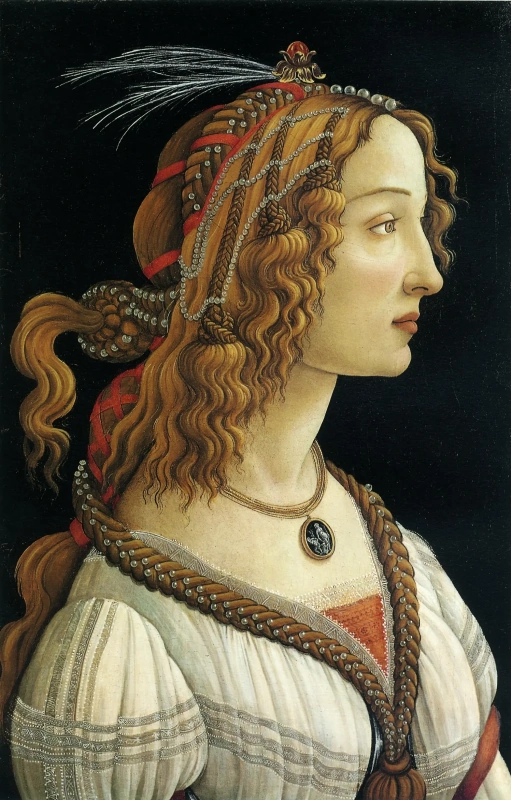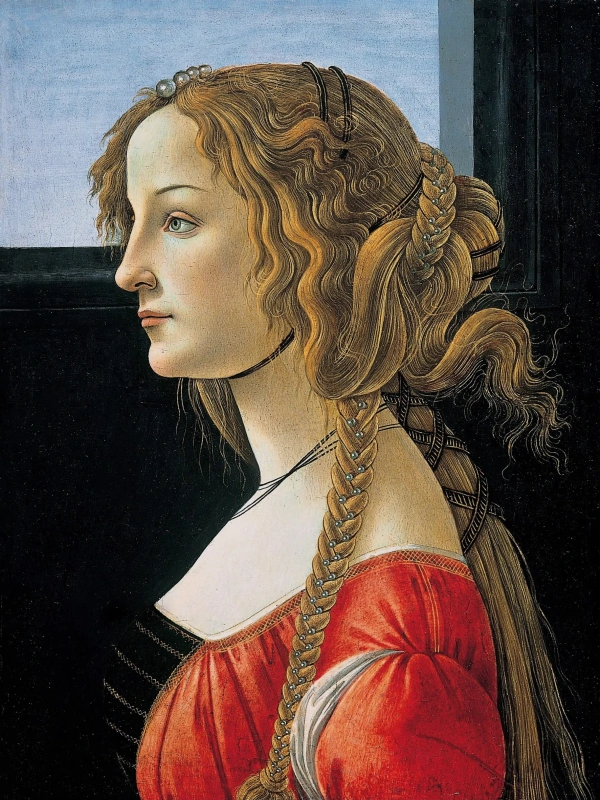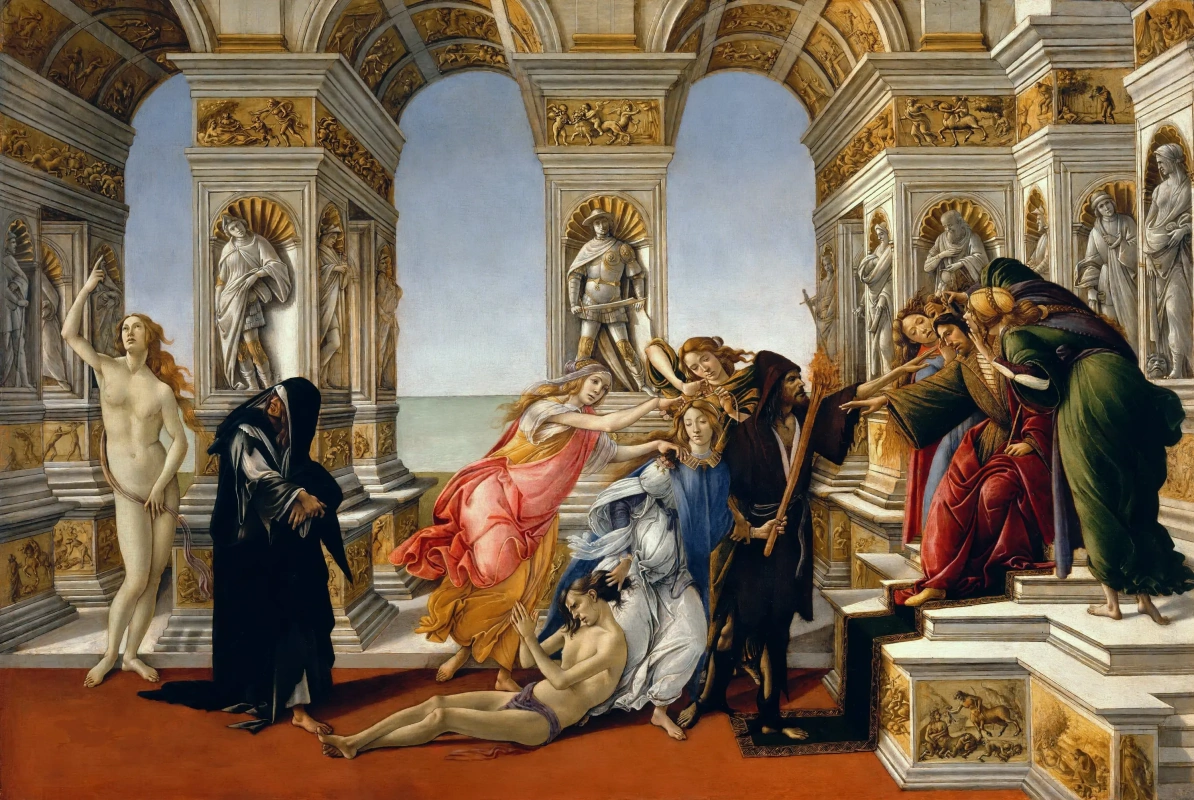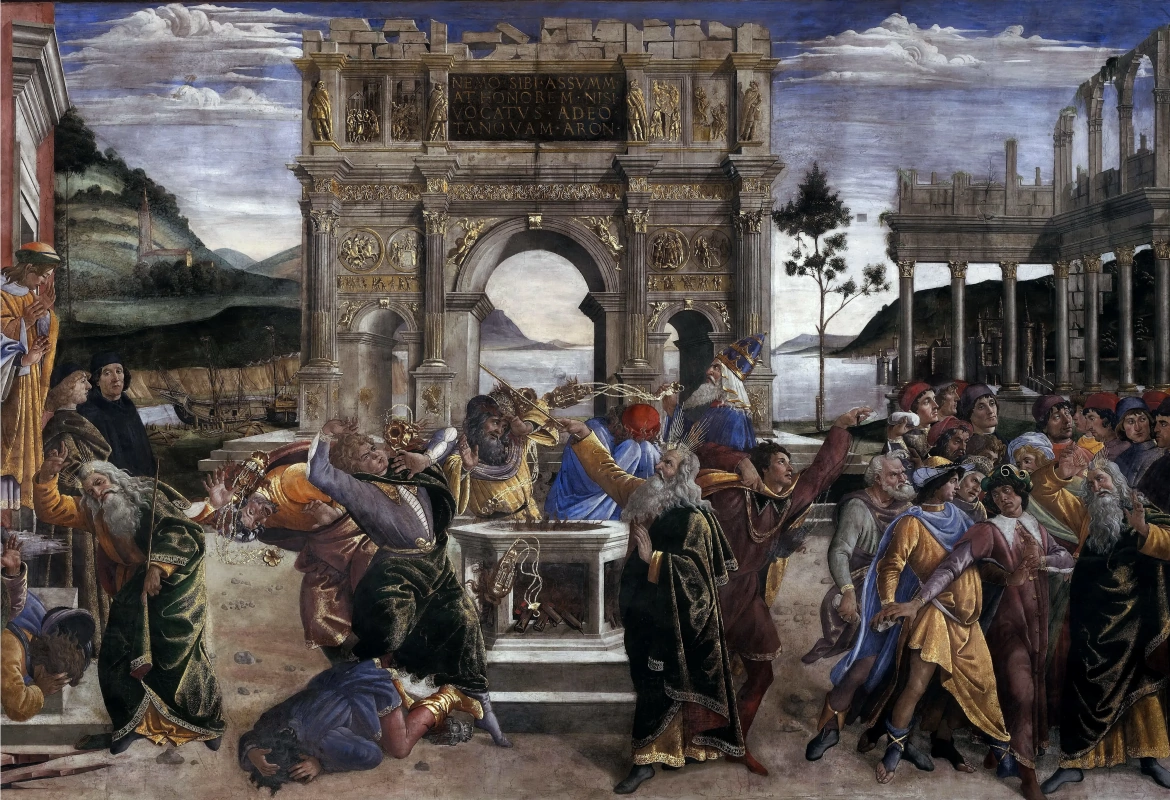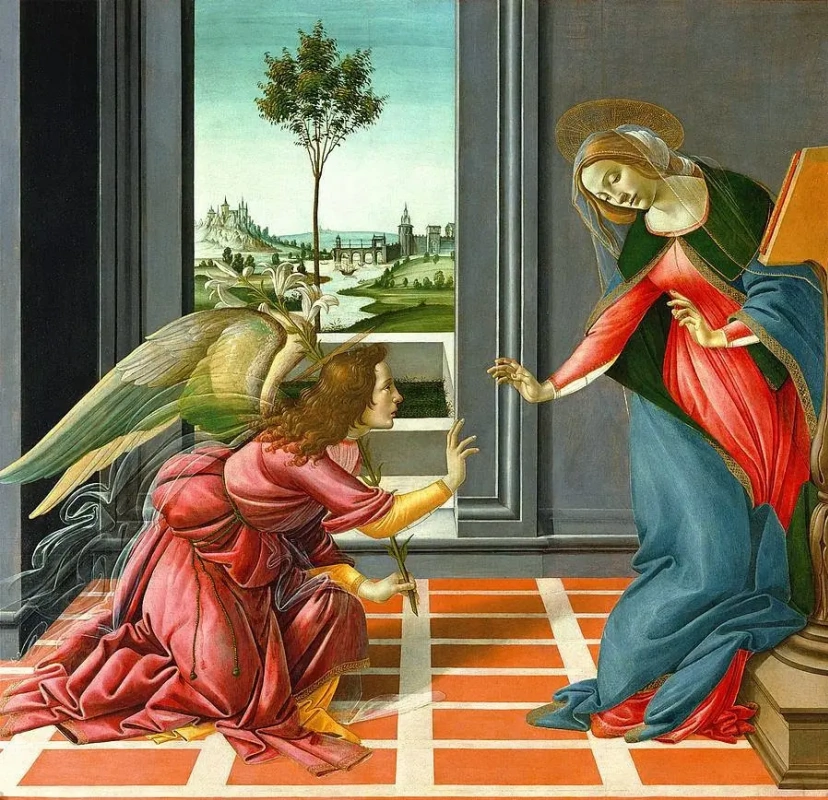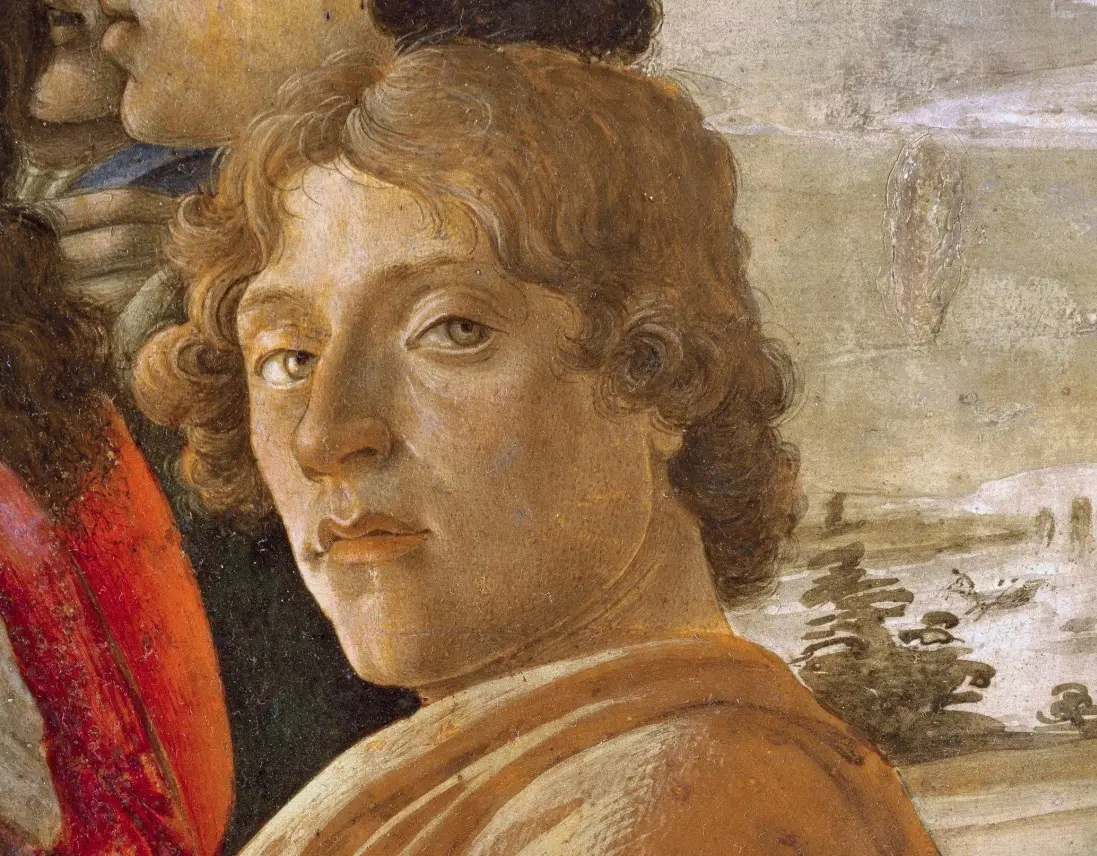
One of the main books is The Lives of the Most Excellent Painters, Sculptors, and Architects by Giorgio Vasari (1511−1574). It contains several free, for the most part strict facts, but this work is valuable for us, as the book was written by the world’s first art historian and the artist, who knew many of the masters personally. The exact information came from the records kept in Florence in the 15th century. In particular, the inventory, where the diligent citizens were obliged to enter their information required for tax calculation (today we would take the necessary information in all ages — the statement of family composition). There was also a book called Red Book of the society of St. Luke, who united painters, as well as the Book of the Dead, the book of shop and city, which contained such kind of data. There is a number of documentaries evidence about the life of Florence, which was published by the scholar and historian Gaetano Milanesi (1813−1895). Some facts were found in the notes of Sandro’s brother, some information about Botticelli was left by Leonardo da Vinci, who had the same mentor as the author of The Birth of Venus.
The researchers of the Renaissance also cited the old works down to History of Florence by Niccolo Machiavelli, they obtained the information from the works of writers of those times and analysed the paintings of Sandro Botticelli himself.
A whimsical mind
This phrase belongs to Giorgio Vasari. We are talking about the childhood of Alessandro Filipepi, nicknamed later Sandro Botticelli, which apparently came from his elder overweight brother (from Italian botticelli "little barrel"). The senior Filipepi, a leather master, probably wanted a younger sibling to follow in his footsteps or to involve into the bargain. "…And although the boy learned everything he wanted to quite easily, he was nevertheless restless; he was never satisfied in school with reading, writing, arithmetic. Disturbed by the boy’s whimsical mind, his father in desperation made him learn goldsmith… In that period, very close relations and almost a constant intercourse existed between goldsmiths and painters, and because of this, Sandro, who was a clever boy and had taken a fancy to painting, turned completely to the art of design and decided to devote himself to it."
Just for fun
"Sandro was a very pleasant man and loved to joke with students and friends." Confirming the words of Vasari, it must be noted that in our days the artist might become famous as a successful organizer of flashmobs and pranks for TV shows like Candid camera. And he spared no effort building complex combinations.Imagine the scenario: the first is to talk the buyer of the student’s work, modelled on the teacher’s tondo of the "Madonna and Angels", into saying that he "would not notice" changes in the finished painting, when he comes to the workshop to accept the job. The second is to inform about upcoming profit in 6 florins for author’s work. The third — to cut from the paper the counterparts of red hats of Florentine Sirs, and, hang the tondo high on the wall — saying that it will be easier for the buyer to look at the work — secretly attach hats over the heads of angels. The fourth: to instruct the students not to giggle during the culmination point. The fifth: during the final viewing in the presence of a warned buyer not to notice the horror on the face of the student artist: Madonna was not surrounded by angels, but Florentine signori in hoods. Finally, the sixth: while an apprentice along with happy buyer, who did not notice anything, go for money, they return everything as it was. And when the young man returns, he pretended that the mind of the student was affected by money: what caps?! That’s hilarious!
So, the craftsman had to seek a compromise solution.
These stories were mentioned in Vasari’s free Biographies… I wonder what lies behind the notarial deed of 18 February 1498. According to the document, Botticelli and his neighbour- the hosier Filippo di Domenico del Cavaliere signed a contract agreeing not to annoy each other. Seriously!
The line is everything, but the landscape and Leonardo is Nothing!
After Sandro had left his Florentine teacher Fra Filippo Lippi, he attended the studio of a renowned master Andrea del Verocchio for two years. This sculptor, painter and goldsmith at that time was also a mentor of Leonardo da Vinci. The teenager was seven years younger than Sandro Botticelli and listened to the opinion of the 20-year-old artist. And he once declared: the landscape is nothing more than a background. Is there a need to take great pains? Take a sponge, soak it with different colours and throw it against the wall — get a spot which will be enough for the landscape . Was Botticelli serious when he painted the Adoration of the Magi for seven times, and, as the botanists admit, depicted 170 kinds of flowers in the picture Spring? Anyway, the method with the sponge in different variations would be used in the twentieth century by another great joker — Salvador Dali. Leonardo seriously pondered over the words of Botticelli, and many years later, after Botticelli’s death, he wrote down in his notes: "Even if the spots will help your imagination, they will not teach you how to complete this or that detail"Does the name matter?
Botticelli, contrary to the possible opinion of the physiognomist, studying the alleged self-portrait of the artist, hardly was vain. Yes, the curve of the lips was haughty, he looked down, and wore the cloak in which the artist appeared in the painting the Adoration of the Magi, he differed from the other subjects by the shade of the clothes: the outfit looked almost like the gold.At the same time, the eminent and popular master did not sign his paintings. And it is not about the irrelevance of these religious stories:
let’s remember about the growing significance of an individual in the time of the Renaissance, and that numerous Italian artists claimed the authorship of his works. They even boasted. A contemporary of Botticelli and Raphael’s teacher Pietro Perugino signed one of his ordinary frescoes this way: "Petrus Perusinus, an excellent painter, if art had died, then this painting revived him".
And a rare, almost unique example of Botticelli’s signature on the work the Mystical Nativity is not a designation of the authorship. It’s almost a political statement, a kind of hard-won "blog post", placed at the top of the picture: "I Sandro painted this picture at the end of the year 1500 in the troubles of Italy in the half time after the time according to the eleventh chapter of St. John in the second woe of the Apocalypse in the loosing of the devil for three and a half years. Then he will be chained in the 12th chapter and we shall see him trodden down as in this picture."(translated from Greek).
You need to believe
The artist did not seek for playing a notable role in boiling public passions, but for personal clothe in the art form. He was a sort of a passionate man. The name Botticelli was firstly associated with the court of the rulers of Florence, the house of Medici, and with the beautiful Simonetta Vespucci. And later with the followers of Savonarola. The artist always needed support, the basis of his own world. He wanted to idealize the environment, to be involved in in the environment of adepts of all kinds, it made no difference whether it was a secular group of philosophy lovers, the circle of the first beauty of the city admirers, or a clan of religious followers.The young Sandro loved the courtly bustle and the lifestyle of the top persons of Florence — Lorenzo and Giuliano de Medici. He even learned Greek to be in their enlightened society — this is evidenced by the inscription on his picture, done in Greek. There was no lack of teachers, as after the fall of Constantinople, there were many Greek refugees in Florence. The young master also joined the Neoplatonists: the Medici financed the so-called Platonic Academy, in the framework of its meetings philosophers, poets, artists, noble and enlightened debated about the synthesis of ancient wisdom and Christian foundations.
Rich? Poor?
About his financial independence Sandro could say using the words of the character of Max Fry’s book: "Ah, they always go away somewhere, these little little rounds, I do not capish where!" The feast of the Spirit in the paintings of Sandro Botticelli was well paid, and the master never refused to paint Madonna. By the time of opening his own workshop in 1470, he reached the golden ratio in the form of the famous florins minted in Florence from yellow precious metal, which would be quoted as dollars and euros in Europe today. He worked with apprentices, it is the evidence that he had the clientele.The earned money was spent easily, how else it could be in a high society, where the spirit of Cosimo di Medici prevailed with his famous statement: "The ability to spend money is even more important than the ability to earn them…"? Spending on the secular way of life was great, but self-indulgence paid off. He had commissions not only from the rich citizens but also from the members of the Medici clan and from the top of the Florentine nobility. Even from the Pope. Vasari wrote: "At that time, this work brought Sandro so much renown both in Florence and elsewhere that after completing the construction of the chapel in his palace in Rome and wishing to paint it, Pope Sixtus IV summoned Sandro to head the project". On account of the Botticelli there are three frescoes of the Sistine chapel and a generous reward: "Sandro received from the pope a good sum of money, all of which he immediately squandered and wasted during his stay in Rome, in living his customarily haphazard existence".
Soon in Florence: "Here he is as a man full of surprises, commented on the part of the Divine Comedy, illustrated and published Hell, on which he spent quite a lot of time. He didn’t earn anything, and that was the cause of endless troubles in his life… Still, he was known to love all who connected with art, everybody he knew and cared about them; but the inability to arrange his affairs and carelessness killed him."
Meanwhile, the prestigious commission of the Roman Pontiff allowed Botticelli to increase the prices of his work.
However, Savonarola appeared in Florence in 1490, and in 1494 the 49-year-old Sandro together with his brother Simone was the owner of the estate with a large villa, bought for 156 florins (a large florin, which was even more significant than the gold Florentine unit). After four years, the income from it, according to the record in the inventory, was 157 large florins. So the beggar and the lonely finale of Botticelli’s life, even with the absence of large, profitable orders, is more likely an exaggeration. Because the house where the nephews with their families lived was his house as well.
Grow where you're planted
While other masters travelled throughout Europe in search of wealthy patrons and customers, followed the geography of orders for paintings and frescoes for palaces and cathedrals, a homebody Botticelli left Florence only twice in his life. The first time was due to the study with Filippo Lippi, whose workshop, because of a large commission — frescoes for the cathedral, — was in Prato, which is 20 km from Florence.Then the teacher, alarmed by the political situation after the death of Cosimo de 'Medici, decided to leave Florence and invited his best and beloved student to Spoleto. But Sandro didn’t go. Of course, he was seduced by the outlined prospects for the court of Medici’s successors, but the unwillingness to sharply change habitual way played the role too.
The second good reason to leave the city happened in 1481: it was a sort of business trip, a trip to Rome to create the frescoes of the Sistine Chapel. Having stayed there a little over a year, Sandro Botticelli lived in his native Florence for the rest of his natural life, which ended in 1510. He was buried in the Ognissanti Church (chiesa di Ognissanti), located near the house where Sandro lived as a child. In the same church, in the Vespucci family chapel, Simonetta is at rest.






